YOUR CART
- No products in the cart.
Subtotal:
$0.00

Photo by Megumi Yoshida
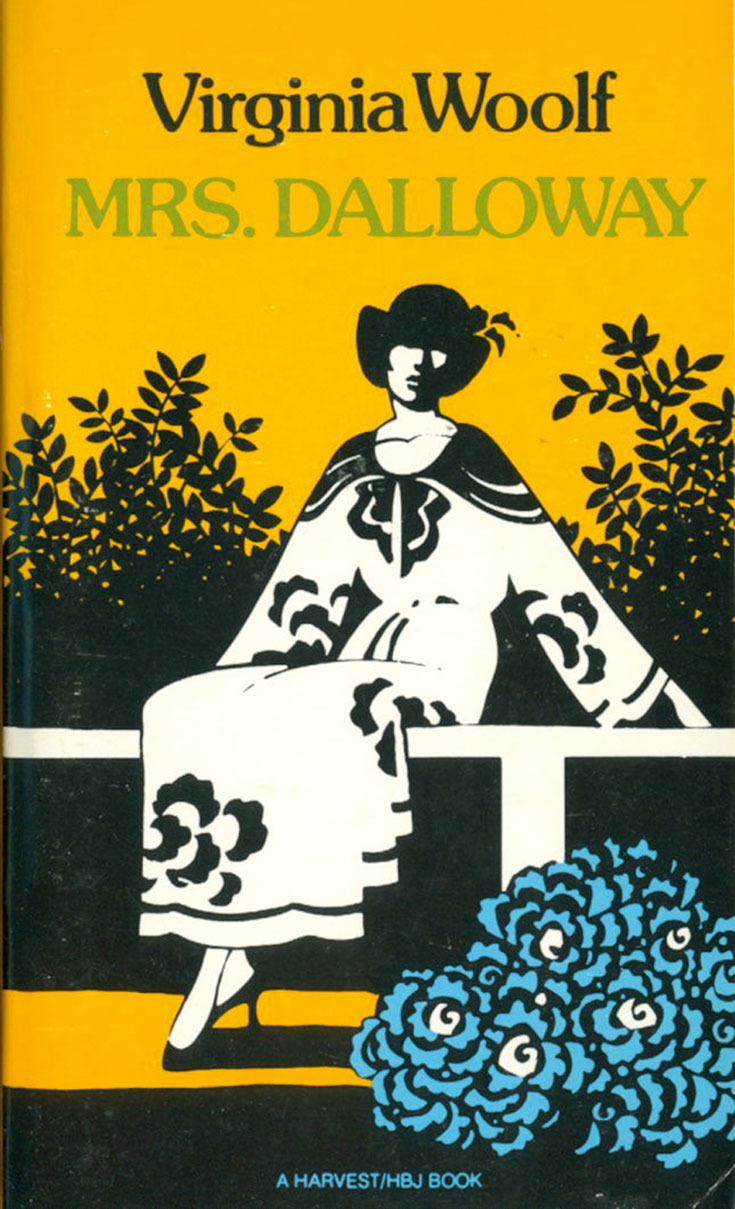
Virginia Woolf’s novel Mrs. Dalloway follows a single day in the life of a British socialite in 1923. The plot is simple. Mrs. Dalloway buys flowers in a London shop, has a visit from a former suitor, and hosts a party. But the novel isn’t about all that. It’s about the vast inner life of one woman, her mind a field of immeasurable size. Woolf painstakingly traces every thought her heroine experiences, and this is part of what makes it remarkable: it was one of the first novels to follow the stream of consciousness.
Woolf wrote Mrs. Dalloway in the wake of World War I, when writers were turning away from the chaotic details of outward events to the fragmented movements of inner ones. Mrs. Dalloway is pummeled by delicious memories of her youth, feelings of inadequacy in the present, and fears about what may come. And aging! Oh, the horror of all this aging. The powerful undertow of mind is pleasing and terrifying by turns. And it’s nothing if not familiar.
Mrs. Dalloway’s story captures the very essence of dukkha, the Buddhist term for a dissatisfaction that permeates our lives, even at the best of times. She feels something is off-kilter. Things aren’t as they’re supposed to be. Desperate for a solution, her mind tries to solve the puzzle of this discomfort.
What happened to that sharp girl of eighteen? She’s changed into a middle-aged woman she hardly recognizes. She chose a husband when she was very young. Did she make the wrong choice? Is that the problem? Or is it the career she craved but never had? If only she could figure out what to do about it all, life would be more…satisfactory. This is dukkha, and she’s mired in it.
Then, unexpectedly, Mrs. Dalloway is aware of nothing but the sounds of a busy London street. She’s captivated by the scent of a flower, or in awe of fresh air. These moments of rapture are so well described, so powerful—they teach us. Reading them, I experience a beautiful lightness akin to relief, to hope. The scenes suggest there might be another way of being in the world. Perhaps there’s a path, some working of the mind, that might ease all of this suffering.
Our existence, we learn, is suffused with dukkha; every second is touched by its turmoil. It can be subtle, or it can be extreme. But being aware of this is a momentous beginning. A flower finally noticed.
I find the dharma most present in the last line of the novel. Mrs. Dalloway steps into the middle of her party, her thoughts silenced for just a moment: “There she was.”
I see a woman at peace. Awakened to her life.
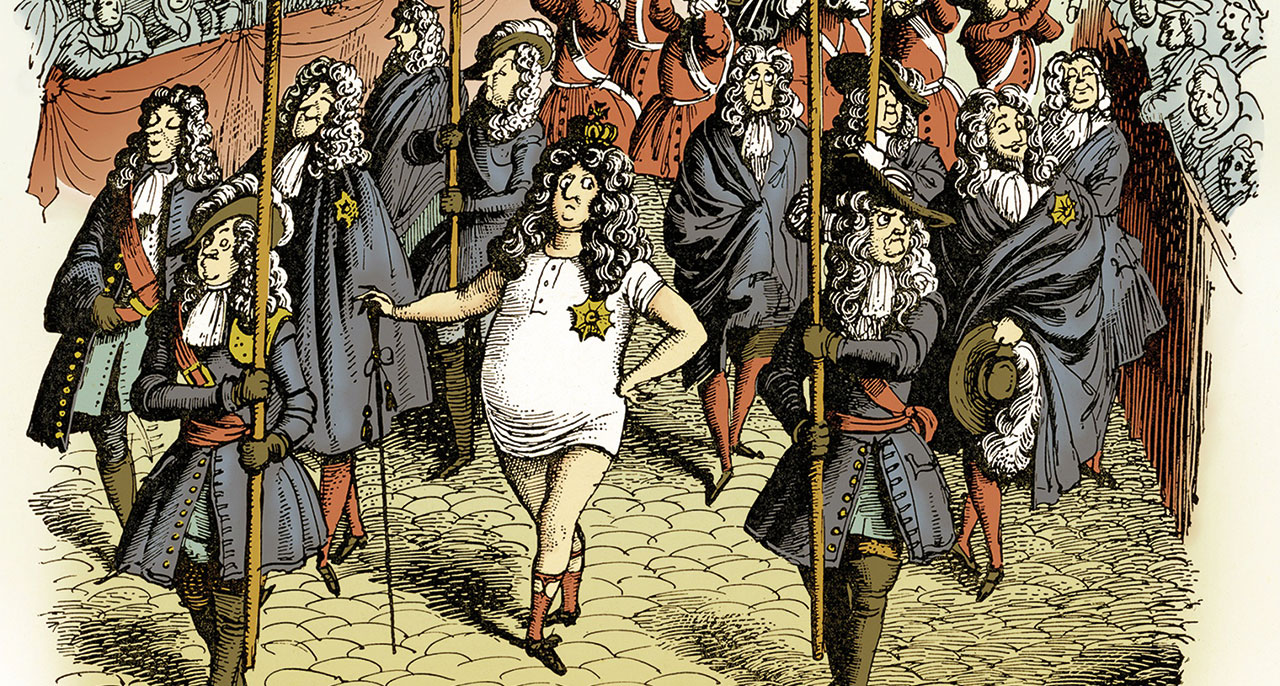
“The Emperor’s New Clothes” has resonated with so many readers that the title has become an idiom. It refers to people’s groupthink tendency to avoid criticizing what others are praising. Illustration by Rex Whistler, 1935
A truly great story like “The Emperor’s New Clothes” can be compared to an old, old coin. It has traversed continents and civilizations, picking up slight changes along the way, yet still bearing the palm oil and wisdom of the millions who’ve handled it.
We know the famous 1837 version by Hans Christian Andersen, but I was delighted to discover that there was a 1335 version in a collection titled El Conde Lucanor, by Don Juan Manuel, prince of Villena. According to Wikipedia, Andersen read this in a German translation from the Spanish. An even older Indian variant exists as well.
All versions of the story that I’m aware of have the same basic premise. A silly king and his royal entourage are tricked by cunning weavers who supposedly present him with finely wrought clothing—with an interesting catch. They claim, depending on the version, that anyone who was born “illegitimate” or not fathered by the man he or she thinks is their father, or who is unworthy of the official positions they hold, or is a fool, will not be able to see such finery.
Naturally, everyone fearing disapproval, shame, or social ostracism says, yes, they can see the invisible clothes!
While not intentionally influenced by Buddhism, this story speaks beautifully to our zeitgeist today, and to the power of collective illusions. We conform. We go along to get along socially. We act and talk as if we believe, for example, that there is something enduring and substantive called the “self,” because everyone speaks that way. And how often have we heard award-winning films, novels, and products praised to the skies, only to realize on inspection, like the child in Andersen’s version, that there is no “there” there? We act as if we believe. Even wrong speech can be powerful, especially if it appeals to our vanities and fears, seducing the mind to accept what it knows—by the evidence of its senses—is not true.
It is a child in Andersen’s version of the story who sees reality clearly. The child has a Zen-like beginner’s mind, one unconditioned by fears of personal loss or gain. It is the child innocently blurting out, “But he hasn’t got anything on,” that liberates the intimidated crowd watching the promenading, naked king to at last speak truth to power.
May we all one day have the courage of that child.
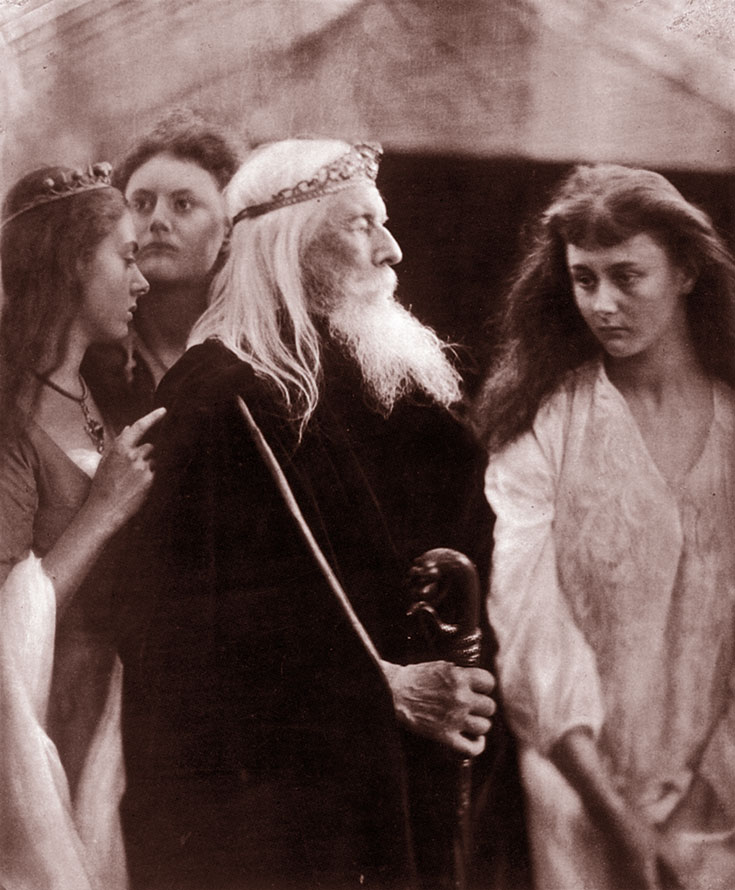
In one of Shakespeare’s most famous tragedies, King Lear decides to divide his kingdom among his daughters. It’s been said that Lear’s daughter Cordelia symbolizes death. When Lear rages against her, he’s raging against his mortality. Photo by Julia Margaret Cameron, 1872
If there’s a word that resounds throughout King Lear—one of Shakespeare’s most devastating plays—it’s the “nothing” that Lear’s youngest daughter says to him in the play’s first scene.
Lear, King of Britain, is proclaiming his decision to renounce the throne and partition it off to his three daughters. But he imposes a test: the daughter who publicly declares she loves him most will receive the largest share. Lear’s two eldest daughters, Goneril and Regan, play to their father’s wish to be venerated. But when it’s time for Cordelia—his darling—to flatter him as they have, she has “nothing” to say. Lear responds with rage.
The word “nothing” appears thirty-four times in King Lear. It’s a word that quietly evokes shunyata, “emptiness” or “voidness.” The definition of shunyata varies among Buddhist schools, but it’s most often understood as a natural consequence of two other views: nonself (all phenomena are empty of a permanent, inherent nature) and dependent arising (all phenomena arise interdependently, contingent on transitory causes and conditions). In other words, nothing in this world possesses enduring identity; all phenomena are interconnected in an endless flux of co-becoming.
Granted, shunyata isn’t “nothingness.” Shunyata is a concept that invites us to see all form, feeling, perception, and consciousness as “not me, not mine.” Lear hasn’t touched this insight, and so Cordelia’s “nothing” humiliates him and exposes how ultimately powerless he is. Not understanding nonself, he grasps at identity. (“Doth any here know me? This is not Lear…. Who is it that can tell me who I am?”)
Wounded and enraged, Lear denies Cordelia her portion of the kingdom, making her a “stranger to [his] heart and [himself].”
Yet Goneril and Regan turn out to be anything but loving daughters, and Lear’s rage at their “ingratitude” grows stronger with each new insult. In the course of the king’s eruptions, we observe a pattern: his reaction, each time, is to renounce whoever has angered or hurt him, labeling them “not me, not mine.” The consequence of this is ten gruesome deaths.
Shakespeare’s wisdom here is that renouncing the other is always a failed strategy. Lear can’t disclaim his own daughters because language has no bearing on blood. This truth extends to all our ties. Even as we attempt to distance ourselves from those who hurt us, we can’t ultimately say “not me, not mine” of another human being. The “emptiness” of shunyata is also the radical fullness of our essential interconnectedness.
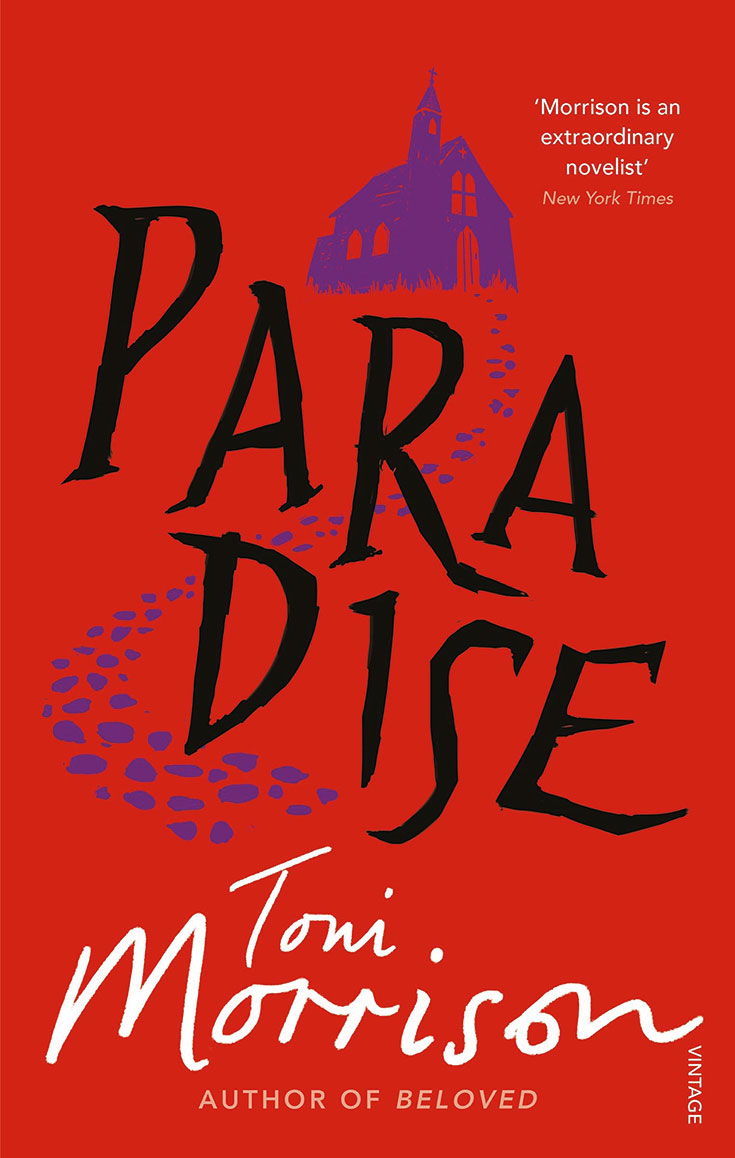
I’ve been looking for examples in fiction, whether Buddhist or not, of the three poisons. It’s easy to find great examples of greed/craving and anger/hatred, which are pretty much the staple of fiction. But the poison of delusion, moha—the erroneous idea that anything is stable and unchanging, which is the ultimate cause of suffering—is harder to find.
Which brings me to Toni Morrison’s Paradise, a novel that feels Buddhist in its capturing of moha. The novel is set in the town of Ruby. It was established by a community of African Americans who fled anti-Black oppression in the late nineteenth century and created their own version of the Garden of Eden, a utopia.
Now, it’s 1976 and the winds of change are blowing ever stronger into Ruby. First, there’s the Black empowerment movement, which is deplored by the male elders. They fear this will cause their youth to question and disobey the way things are done in their town. Then there’s the women’s liberation movement. This is threatening because essential to the establishment and continuation of the utopia of Ruby is a patriarchal hierarchy in which women must remain compliant, chaste, and serving.
Fear of change becomes focused on some women who live in a former convent a little distance from the town—a place that has become a safe haven for women fleeing various kinds of violence and oppression. Unlike Ruby, the convent has no real hierarchy, and these women are free to be who they wish. As a result, the convent women soon become the symbol for all that threatens Ruby. So the women must go. Early one morning, the men arrive at the convent and massacre the women.
The massacre in the novel is result of moha. The men cannot face the nature of reality, which is change, so they sublimate their anguish and fear into the destruction of the perceived agents of change. What happens in Paradise is a microcosm of what has happened throughout history. Utopias tend to require massacres, in order to stay utopias. I find myself returning again and again to this notion of the danger of utopias—not just on a societal level, but also on a personal level. We cause so much destruction and unhappiness by trying to keep something we value from changing, especially the places or people where we’ve parked our happiness.
How interesting that Morrison, who wasn’t Buddhist, has so insightfully captured moha! But then, Morrison was a one of the great observers and interpreters of the human condition, as Siddhartha Gautama was so many centuries before.
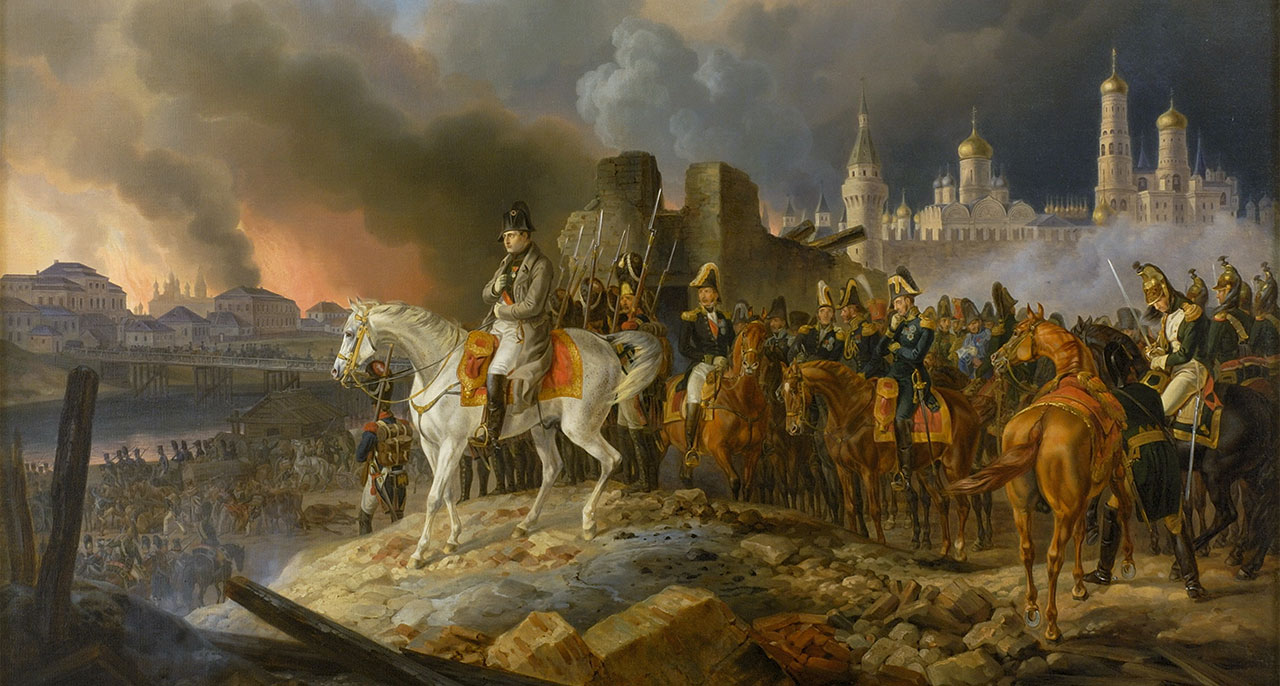
War and Peace fictionalizes the French invasion of Russia. The author Leo Tolstoy hesitated to classify the book, saying it’s “not a novel, even less is it a poem, and still less a historical chronicle.” “Napoleon in Burning Moscow” by Albert Albrecht, 1841
There’s a moment in reading War and Peace when I say, “Tolstoy! You Buddhist you!”
At this point, I’m almost a thousand pages in. Tolstoy’s love of humanity is clear. He understands their frailties and failings, their quotidian concerns. He scorns the selfish, upholds the moral. I am hypnotized by his characters, the movers and shakers of early nineteenth-century Russian society. Now Napoleon is about to invade Moscow. Enter the dharma.
“The first thing history does,” says Tolstoy through the character of General Kutuzov, commander-in-chief of the Russian forces, “is to take an arbitrary series of continuous events and examine it separately, whereas in fact no event can ever have a beginning, because an individual event flows without any break in continuity from another.”
Tolstoy is saying that the basic condition of phenomena is one of motion as opposed to discrete, discontinuous units. This is interdependence, I think to myself, recognizing the telltale signs. Impermanence. Continuation. War and Peace is a sand mandala of a telling.
Kutuzov holds a council of war, ostensibly to decide whether to repel the French or let them take Moscow. In his heart, he already knows the answer. “Why was it certain that Moscow had to be abandoned? When did something happen that made it inevitable, and whose fault was it?”
Maybe Tolstoy himself would like nothing better than to find a single perpetrator, a causal factor, someone to blame. Isn’t that what Napoleon’s there for? But no. It’s not in Tolstoy to fall for simple-minded answers. There was no one person responsible, no one event. He knows there was no particular beginning, and there will be no tidy end. Tolstoy can neither blame nor credit Napoleon.
Alone in his conviction, Kutuzov is badgered by his advisors and tormented by doubt. He gives the order to retreat, and Napoleon invades. Though the French take Moscow, they realize too late that their reach has exceeded their grasp, and they depart in disarray. Kutuzov leaves them to their ruin, simply observing it. He does not take the advantage in their dissolution.
Time is continuous. Motion and events are continuous. There is no single moment of beginning, even if we go all the way back to Napoleon as a glint in his father’s eye. There is “no birth and no cessation,” and neither Tolstoy nor his protagonist will pretend there is.